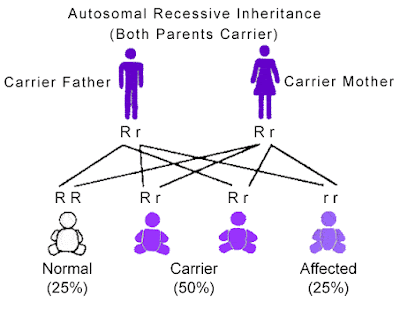Congenital Insensitivity to Pain with Anhidrosis (CIPA) which is also known as HSAN-IV, is resulted by a gene mutation which happens in the human neurotrophic tyrosine kinase receptor gene, in short, the NTRK1. This gene serves to provide instructions for protein syntheses in the NTKR family. The NTKR family makes up receptors that can be found on the surface of nerve cells. These receptors respond to nerve growth factor (NGF), which is essential for proper functioning and survival of nerve cells.
In this case, NTKR1 receptor in
people with CIPA is abnormal and cannot identify NGF. This results in the
nerves’ inability to survive or proper functioning. Thus, people diagnosed with
CIPA are unable to feel pain or heat and also trouble with sweating.
As CIPA is an inherited recessive genetic disorder, one
copy of the faulty NTKR1 gene from each parent must be passed down to the
offspring to develop this disease. If only one faulty gene is inherited, the
individual is known as a “carrier” of the disease and possesses the possibility
to pass down the mutation to their children. For instance, if one parent is a
carrier, then his or her child will possess a 50% chance of becoming a carrier,
whereas if both parents are carriers, each child will possess a 50% chance of
becoming a carrier, 25% of either developing the disease or free from the
disease respectively. In another word, about one out of four children may have
CIPA if both the parents are carriers. Just like any other recessive disorders,
there is a higher chance of developing CIPA in families that are closely related
which also means they share similar blood line (“Congenital insensitivity to
pain with anhidrosis”, 2011).
Reference:
Natural Standard Research Collaboration. (2011). Congenital insensitivity to pain with anhidrosis. Natural Standard Research Collaboration. Retrieved October 10, 2016 from http://www.livingnaturally.com/ns/DisplayMonograph.asp?StoreID=3ED1FF6A18BD42979FFF73C8E8CD4512&DocID=condition-cipa


No comments:
Post a Comment